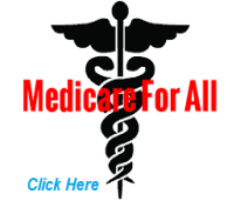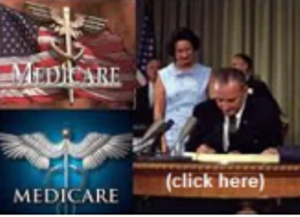What is Medicare Part D and how does it work?
Part D is an optional prescription drug program for people on Medicare. Medicare Part D is simply insurance for your medication needs.
You pay a monthly premium to an insurance carrier for your Part D plan. In return, you use the insurance carrier's network of
pharmacies to purchase your prescription medications.
What Medicare Part D drug plans cover (medicare.gov)
Each plan that offers prescription drug coverage through Medicare Part D must give at least a standard level of coverage set by Medicare. Plans can vary the list of prescription drugs they cover (called a formulary) and how they place drugs into different "tiers" on their formularies.
Expanded List of covered prescription drugs (formulary)
Most Medicare drug plans (Medicare Prescription Drug Plans and Medicare Advantage Plans with prescription drug coverage) have their own list of what drugs are covered, called a formulary. Plans include both brand-name prescription drugs and generic drug coverage. The formulary includes at least 2 drugs in the most commonly prescribed categories and classes. This helps make sure that people with different medical conditions can get the prescription drugs they need. All Medicare drug plans generally must cover at least 2 drugs per drug category, but plans can choose which drugs covered by Part D they will offer.
The formulary might not include your specific drug. However, in most cases, a similar drug should be available. If you or your prescriber (your doctor or other health care provider who’s legally allowed to write prescriptions) believes none of the drugs on your plan’s formulary will work for your condition, you can ask for an exception.
A Medicare drug plan can make some changes to its drug list during the year if it follows guidelines set by Medicare. Your plan may change its drug list during the year because drug therapies change, new drugs are released, or new medical information becomes available.
Plans offering Medicare prescription drug coverage under Part D may immediately remove drugs from their formularies after the Food and Drug Administration (FDA) considers them unsafe or if their manufacturer removes them from the market. Plans meeting certain requirements also can immediately remove brand name drugs from their formularies and replace them with new generic drugs, or they can change the cost or coverage rules for brand name drugs when adding new generic drugs. If you’re currently taking any of these drugs, you’ll get information about the specific changes made afterwards.
For other changes involving a drug you’re currently taking that will affect you during the year, your plan must do one of these:
- Give you written notice at least 30 days before the date the change becomes effective.
- At the time you request a refill, provide written notice of the change and at least a month’s supplyunder the same plan rules as before the change.
|
Note |
|
For 2019 and beyond, drug plans offering Medicare prescription drug coverage (Part D) that meet certain requirements also can immediately remove brand name drugs from their formularies and replace them with new generic drugs, or they can change the cost or coverage rules for brand name drugs when adding new generic drugs. If you’re taking these drugs, you’ll get information about the specific changes made to generic drug coverage afterwards. |
You may need to change the drug you use or pay more for it. You can also ask for an exception. Generally, using drugs on your plan’s formulary will save you money. If you use a drug that isn’t on your plan’s drug list, you’ll have to pay full price instead of a copayment or coinsurance, unless you qualify for a formulary exception. All Medicare drug plans have negotiated to get lower prices for the drugs on their drug lists, so using those drugs will generally save you money. Also, using generic drugs instead of brand-name drugs may save you money.




